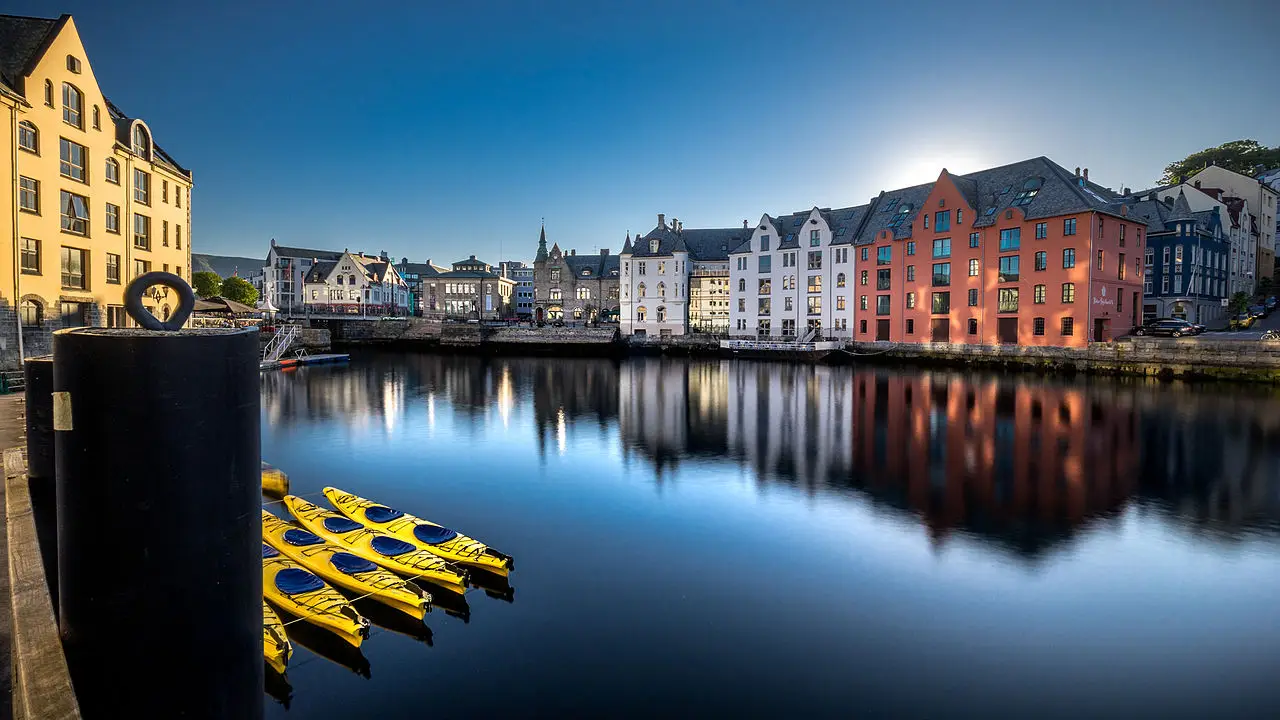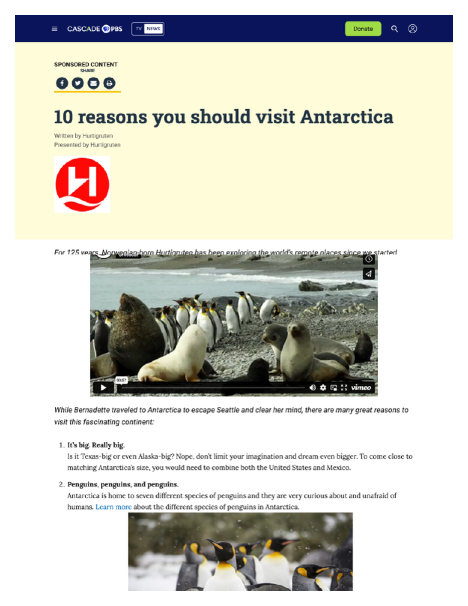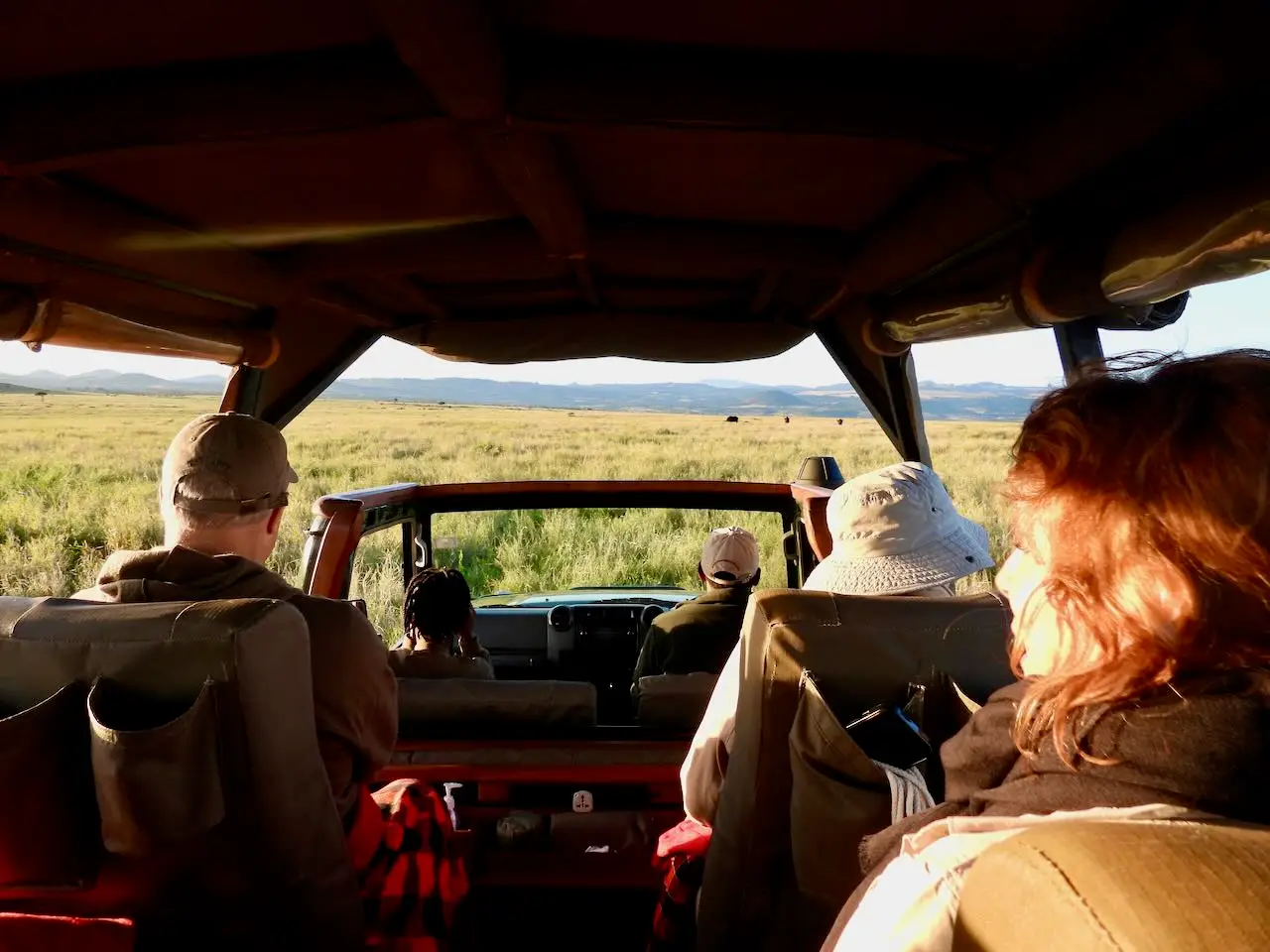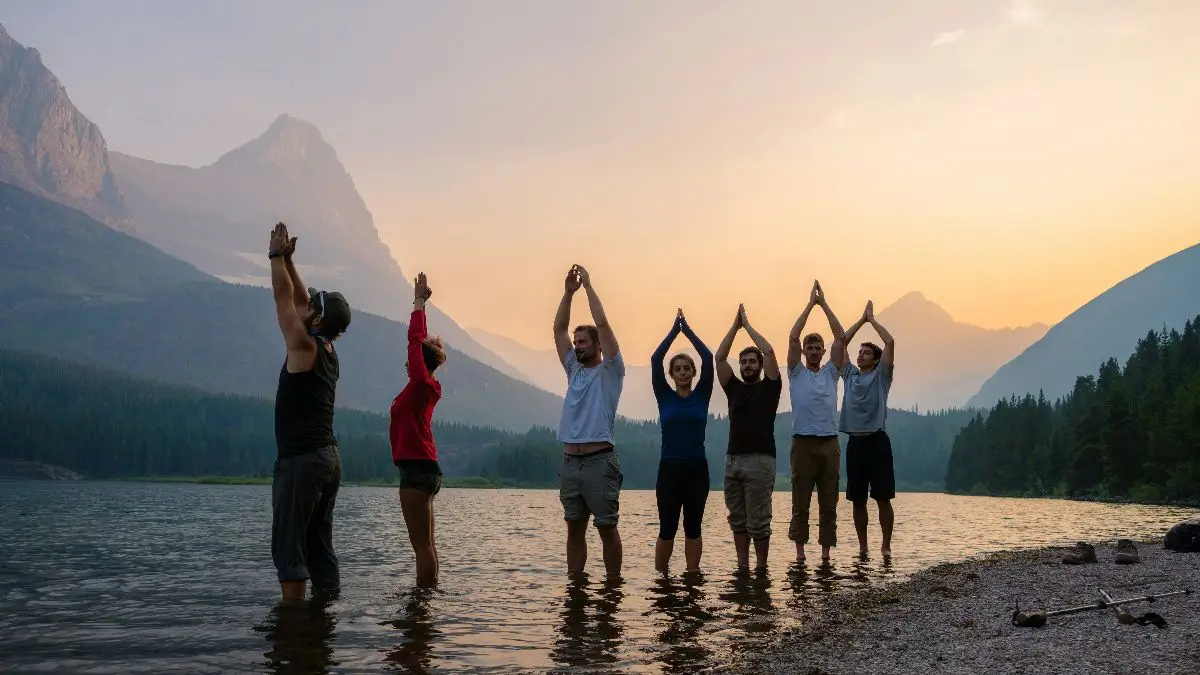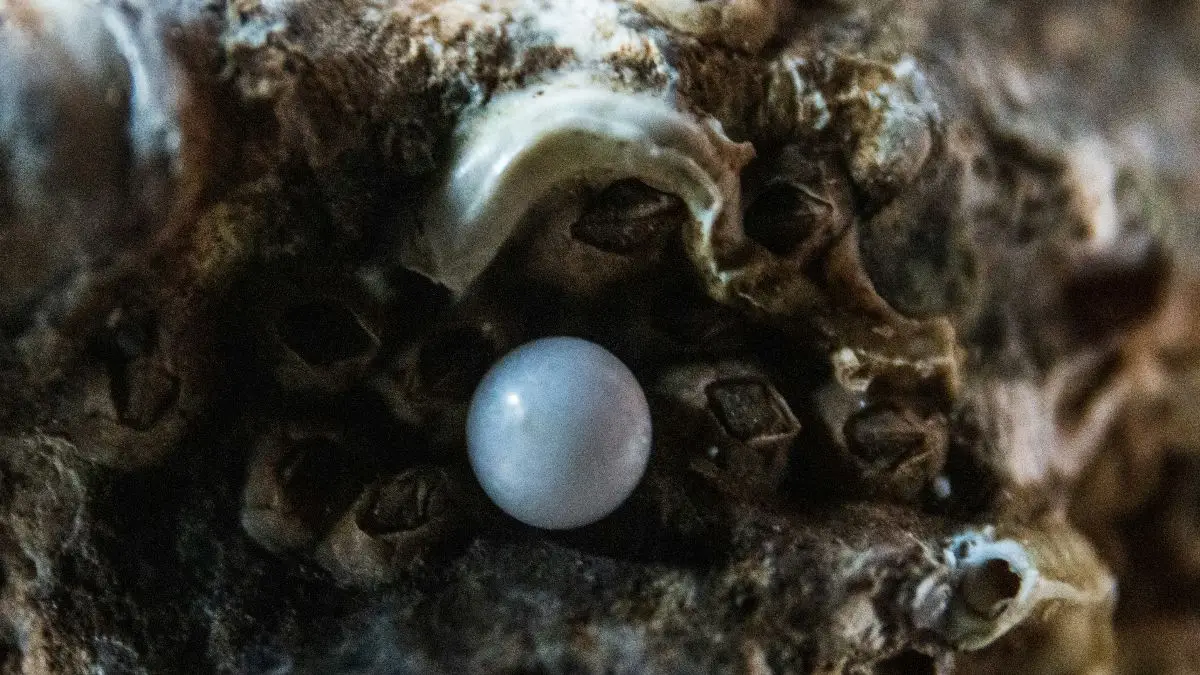Why Do Cruise Brands Need Content Marketing?
Becoming a publishing brand is particularly important for companies in the travel industry who sell experiences. Between destinations, onboard experiences, and excursions, there’s a never-ending source of authentic and engaging content that can keep potential travelers entertained until they are ready to make a considered purchase. Content marketing is essential for attracting, engaging, and converting travelers in the cruise industry.
Cruise lines need content marketing for several key reasons:
Brand awareness
To capture potential travelers during the research phase, the best thing your brand can do is to Introduce your cruise line’s point of view and personality to travelers through engaging content. It’s always far more effective to show travelers your personality through stories, than listing your company values and priorities on a static web page.
Demonstrate your strong and clear brand voice and point of view and your customer story through content that:
- Targets unique audience segments (like singles, retirees, families, loyal repeat travelers) that help them imagine themselves onboard
- Demonstrate experiences that embody your brand values and perspectives
- Build emotional connections through storytelling
- Inform and educate your audience with authoritative, relevant, and helpful content about destinations, traveling, and onboard experiences
- Boost credibility and trust with information about environmentally-friendly and sustainable practices
Engagement
If your site only contains static sales information, there’s no incentive to come back more than once. If they’re not quite ready to push go on a cruise yet, you need to give them new and changing information so they will continue to return.
Engaging content, such as blogs, videos, and social media posts, fosters a connection with potential customers, keeping the brand top-of-mind. They also keep readers coming back for new information and increase touchpoints with your brand.
Some of the most engaging cruise content includes:
- Behind the scenes content of how the crew lives and works
- Destination content and cultural background
- Food and beverage stories
- In-depth cultural and destination content
- Experts sharing their knowledge about the history and science of the region
- Webinars and live question and answer sessions
- Features of ship amenities and programs
- A day in the life of a traveler
- Exciting and immersive content about destinations and excursions
Differentiation
What is the personality or point of view for your cruise line? Content can highlight what makes your brand special, whether it’s ultra luxury with personalized service, expedition and adventure travel, deep historical context, or in-depth wildlife and history expertise.
Demonstrating these differences through written and video content will also provide tangible and in-depth information to educate travel agents on your brand and find the type of cruiser that best fits your brand. Content can educate potential travelers about destinations, onboard experiences, and itineraries, and address common questions and concerns.
A few story ideas to support the goal of differentiating your brand promise and cruise line could be:
- How is your onboard experience different from your competitors? Show a day in the life of one of your passenger in narrative and/or video format
- Profiles of crew and entertainers on the ship with their story and what they like the most about living and working at sea
- Stories about art and artifacts found on the ship
- Background on the cuisine program
- Cultural knowledge and expertise about the regions you cruise in
SEO benefits
Well-optimized content improves search engine rankings, driving organic traffic to the cruise line’s website and increasing visibility.
The first things that cruisers search for is destination content, then cruise lines secondarily. If your cruise line specializes in a particular region, having in-depth destination content optimized for SEO will significantly improve your search performance and put you in front of your customers.
Loyalty marketing
Content can build emotional loyalty, complement the onboard experience, and generate more loyalty from your best and most engaged customers. Holland America, Princess Cruises, Norwegian, and Royal Caribbean all produce some type of content for their best customers.
Here are a few ideas for content that could keep your top customers happy and engaged:
- Members-only destination experiences
- Stories by onboard experts
- Stories about members-only experiences
- Content about the cultural history of spa treatments that are provided in the onboard spa.
- Stories about frequent cruisers and the cruising lifestyle
- Editorial coverage about food and beverage programs and products. For example, the story behind the lemons of Ravello, Italy used in the onboard menu
Create demand for unique destinations
Learning about fascinating and unique places will definitely put them at the top of my bucket list. For instance, when I worked at Hurtigruten, it became evident that many people (including myself, a clueless Norwegian-American) did not know what Norway had to offer and why you would want to travel there. At the time, Hurtigruten did not have (and was not interested in starting) a robust content marketing program.
One of the things that differentiated the cruise line in my mind was its authenticity – the cruise line is one of the most beloved brands in Scandinavia and the freighters are used by Norwegians themselves for transportation, shipping, and holidays. The food is local, fresh, and authentic, and the crew hails from the region. This brand has deep cultural roots and is an iconic Norwegian brand – essentially the Coca-Cola of Norway. The experience itself focuses on local heritage, beautiful and distinctive geography, and cultural history. There are so many fascinating stories that could be told to differentiate this adventure cruise brand from its luxury brand competitors and create interest in lesser known destinations.
For instance, the fascinating fact that Ålesund, Norway (shown in top photo) burned down and the entire town was rebuilt in the Art Nouveau architectural style was fascinating to me. And walking the streets of this perfect town and learning about this style and its cultural history was a memorable experience.
Why would I want to take a cruise in Norway? My impression was that the climate and topography would be similar to my home in Seattle. And when I arrived in the glorious fjords and squeaked our way through the narrow Trollfjord, I realized how wrong that assumption was. The nature, culture, and views were far more exotic and beautiful than I expected. And the food more delicious and sophisticated than my Norwegian grandmother ‘s concoctions.
If Hurtigruten had implemented a content marketing strategy at the time I traveled with them, these types of articles would have been an easy sell for me:
- Articles about wildlife and nature from onboard experts
- Cultural background on the destinations
- Folklore about the Northern Lights
- History about the indigenous cultures we would see
- Maps and articles about the geology and ecosystem of the fjords
- Stories about the hardy people living in these remote and challenging environments
- Descriptions about Norwegian food and the cuisine program that introduced travelers to Norwegian specialties
- Stories about the indigenous people like the Sami and their folklore and connection with nature
Same with traveling to a cold climate in the winter. It doesn’t elicit the same visceral response as the warm blue Caribbean waters. But creating interesting content is easy when you you add the Northern Lights, polar bears, and the underground wine cellar in Svalbard!
Two examples of this were sponsored content articles that I wrote that were published on the local PBS television affiliate website. Sponsored content is essentially content that you produce and control and pay the media outlet for eyeballs. Content marketing is the perfection execution for this, since it is generally standalone content that is interesting by itself and establishes trust with readers but definitely and indirectly highlights what is special about the brand. They contained videos and narrative text about interesting subjects and destinations that you could visit with Hurtigruten.
For instance, an article on the Northern Lights (with video features) was published the same weekend that the aurora was visible in Seattle. People were fascinated and excited and this article got huge engagement and was the best performing sponsored content in the media outlet to date. The content described folk stories about the origins of the aurora from indigenous people, descriptions of why they happen, the most likely places to see them (that happen to be Hurtigruten destinations). And described the Northern Lights promise, Hurtigruten’s guarantee if you don’t see the lights your next voyage is free.
Emerald Skies over the Emerald City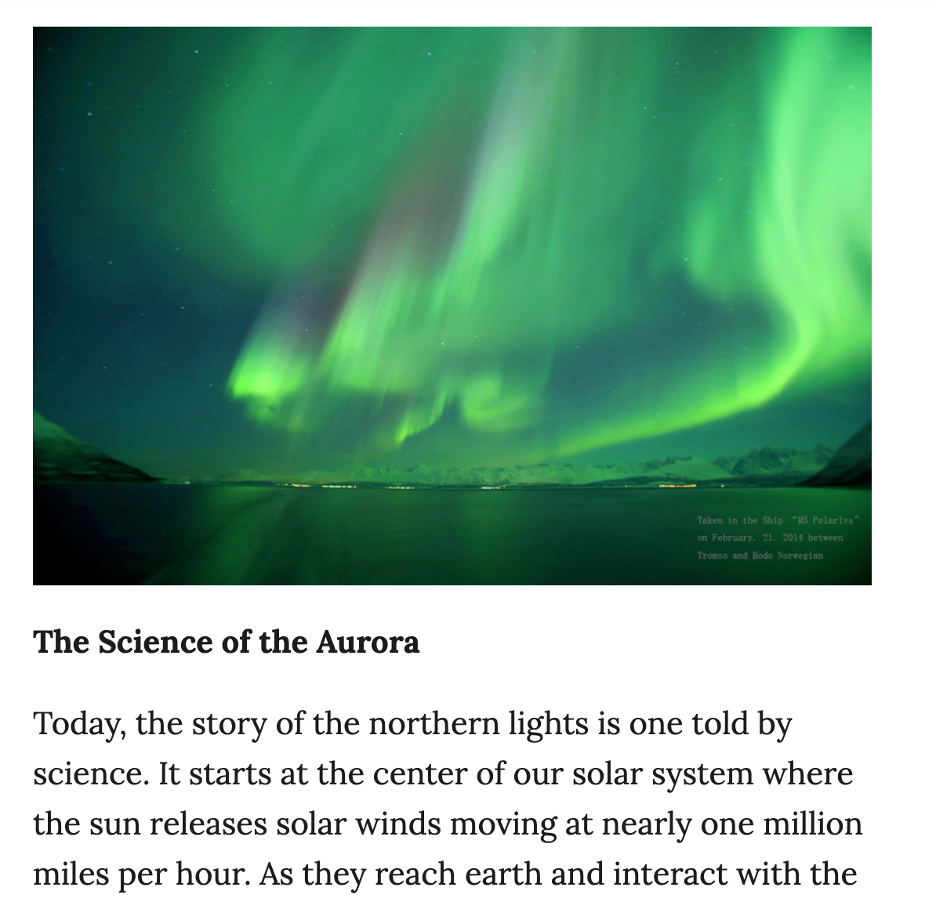
Another piece of sponsored content listed 10 reasons that you should visit Antarctica. These fascinating facts (and cute photos of penguins) educated, engaged, and introduced new readers to the brand. It also provided background on the Hurtigruten brand and a link to the specific expedition.
10 Reasons You Should Visit Antarctica
Prospecting and recruiting new travelers
One key purpose of content is to attract new travelers to the brand in a low-pressure way. Sharing testimonials, trip reports, reviews, and user-generated content builds trust and credibility, and can start to form long-term customer relationships.
In my opinion, Lindblad Expedition Cruises, affiliated with National Geographic Expeditions, does this most effectively by publishing daily expedition updates on their Facebook page, web site, and through email. Friends and family of travelers can watch the journey and get an insider’s view of what it’s like to travel with Lindblad. This is one of the best examples I’ve seen of using content effectively to drive lead generation.
Nurturing leads
Through informative and engaging content, cruise lines can nurture leads through the sales funnel, turning interest into bookings. When a potential guest first learns about your brand, they probably will not be ready to purchase immediately. Cruises are a considered purchase and research shows that potential customers need about 20 to 30 touchpoints before making a booking decision. Producing great content about your brand experiences (as opposed to hard sell transactional content) will keep them entertained and engaged, generate trust, and gently escort them down the funnel towards purchase.
Some of the best examples of cruise content include:
- Lindblad/National Geographic Expeditions
- Norwegian Cruise Lines’ Chasing the Sun travel blog
- Windstar Blog
Top photo credit: “Alesund, Norway – Travel photography (22504388739)” by Giuseppe Milo from Dublin, Ireland is licensed under CC BY 2.0.


